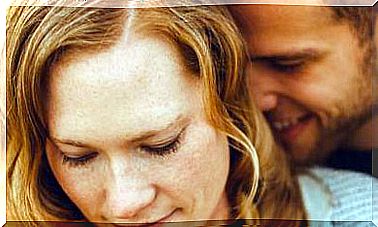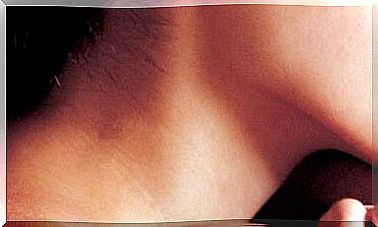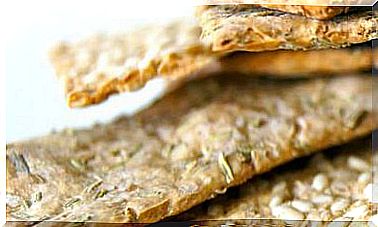15 Challenges For A More Creative Brain
The brain is in our hands: our actions shape it. A healthy life and challenges in line with life priorities keep you active.

The separation between body and soul, or between body and mind using more modern language, is beginning to become obsolete. From the world of science the mind is not conceived without the brain. We not only have a brain, we are a brain… and some other things.
Far from being watertight compartments or independent entities, body and brain seem to form an integrated whole. In this sense, the neuroscientist Antonio Damasio points out in his book El error de Descartes (Critical Ed) that: “Mental activity, from its simplest to the most sublime aspects, requires the brain and the body itself”.
An extraordinary consequence of this approach is that everything influences everything. What happens to the body will affect the brain; mental life will in turn influence the brain and the body; brain activity will affect the body and mind …
Thus, to keep the brain in good condition, not only the care that is provided is important, but also the comprehensive treatment that the body receives and the type of prevailing mental activity.
In the same way that relaxing the body muscles can change the functioning of the brain and mental experiences, listening to music or seeing a certain face can change brain biochemistry and body dynamics.
Being aware of this interaction opens up enormous expectations and possibilities when it comes to taking care of those complex beings that we are.
Physical care for the brain: nutrition, rest and exercise
The two great missions of the brain are to govern the functioning of the body and to create and control the mind, in order to make the survival of the organism possible.
For all this, it is equipped with about one hundred billion cells linked by an immense network of connections, to the point that it is considered the most complex organ that evolution has generated. Its approximate average weight is one thousand five hundred grams and usually constitutes 2% of body weight.
Physical care of the brain is at the base of its proper functioning. The integrity of our body system depends on them, which in turn determines the quality of our experiences and our life expectancies.
To this day, it is still not well known what factors determine the amount of mental resources available to a person. Speculatively, some candidates have been proposed, such as the supply of oxygen, the density of connections between neurons, the speed of transmission of electrical signals or the concentration of neurotransmitters.
It may be a combination of these and other factors. But the truth is that in all of them we find a common denominator: they are directly related to physical physical support. And for its integrity, and until proven otherwise, physical measures are ultimately needed.
Food, sleep and exercise are three key aspects to keep this extraordinary structure fully operational.
Nutrition for a fit brain
The brain requires a large amount of energy to carry out its functions. Your daily energy consumption is about 400 calories, which represents 25% of your basal metabolism.
Glucose is its fundamental fuel: by itself it consumes between 100 and 110 grams each day, so it is important to spread its intake throughout the day and, especially, to ensure its presence at breakfast.
Its availability is so important that all energy metabolism revolves around maintaining blood glucose ( glucose concentration in the blood).
Taking care of the quality of fats, providing sufficient amounts of protein and providing the recommended amounts of vitamins and minerals are other essential aspects to properly nourish the brain.
It seems obvious that the brain is really comfortable with the traditional slogan of “peace of mind and good food.”
Without sleep there is no healthy brain
We spend a third of our lives sleeping. Does it make sense to spend so much time in a state that deprives us of contact with the environment? The answer is yes, because sleep seems to have the essential purpose of ensuring optimal brain function.
It has been pointed out, for example, that for correct learning and memory processing to take place, it is necessary for the entire wake-sleep cycle to run in a normal and harmonious way.
The unconscious task of the brain during sleep is a key aspect that affects the cognitive processes that the brain will carry out during the next wakefulness. Sleep makes us different when we wake up and more suitable for life.
If we do not sleep, our cognitive abilities will be impaired the next day, so that the brain malfunction will be the cost of the lack of night’s rest.
The effect of physical exercise on the brain
There is a growing body of evidence showing the beneficial influence of aerobic exercise on brain health through different mechanisms. For example, the improvement of vascular health – from which the neural network benefits – or the reduction of stress.
There is also evidence of the beneficial influence of aerobic exercise on the plasticity of the cerebral cortex and the ability to form a greater number of connections between neurons.
Those who practice some type of physical exercise regularly are more likely to keep their mental faculties in good condition at advanced ages.
In the case of sports, they must be adapted to individual possibilities and be practiced regularly and under medical supervision. The type of practices that are usually suggested are walks, jogging, cycling, dancing, gardening, climbing stairs, swimming …
Reduce aggressions: toxins and the brain
An excessive alcohol consumption exerts direct toxic effects on neurons and can cause deficiencies of vitamin B1, very important for different brain functions.
By different mechanisms, tobacco is also toxic to brain neurons, and it is known that people who smoke have more difficulty remembering names and faces than non-smokers. Likewise, there are data that indicate that the decline in cognitive functions is much more pronounced among smokers.
Metals such as lead, aluminum and cadmium, and gases such as carbon monoxide are also substances that attack the brain and should be protected from as much as possible.
Exercise for the brain: the importance of mental activity
Now, physical care is a necessary but not exclusive or sufficient condition for the full functioning of our thinking organ.
It is often forgotten that our ability to think, feel and act is the result of brain activity. The fact that that mind that thinks, feels, and acts is the emergent product of brain activity seems self-evident to modern science.
But can the reverse process happen? That is, through thoughts, feelings and actions, can the structure and function of the brain be influenced?
The current position of many neuroscientists affirms this: it is not possible to think or speak of the mind without the brain, nor of the brain without the mind.
Biology helps to understand an important part of our destiny, but it does not explain everything. As the neuroscientist Elkhonon Goldberg, author of The Paradox of Wisdom (Critical Ed) points out, within biology there is a lot of room for maneuver.
The genetic code can establish a range of expressions for certain abilities, but exactly where we end up within this range depends on what each person does with their brain and body.
Ramón y Cajal, considered the father of current neuroscience, pointed out that “every human being, if he sets his mind to it, can be a sculptor of his own brain.”
There is no doubt that one of the concepts that has revolutionized the vision of the brain is the so-called neuroplasticity, which can be defined as the changes that take place in the organization of the brain as a result of experience.
The brain can form new connections, new cells, and increase its neurotransmitters by increasing their use. Recent discoveries indicate that mental activity can change the brain and Eric Kandel, Nobel Prize in Medicine, recalls that “learning involves structural and functional changes in the brain.”
There are numerous investigations that highlight the ability of the brain to modify its function according to use also in adulthood.
The point is that the work of the brain is mental: reading, speaking, calculating, remembering, attending, thinking … it is not like tensing a muscle or digesting. This use is not something physical or material, it is not something that directly manipulates the system or intervenes directly on it.
And today, everything has to be said, it remains a mystery how matter becomes subjectivity and subjectivity into matter, that is, how, for example, from the connection of a certain number of neurons a gesture of altruism or a poem, or how a thought or memory can contribute to the formation of a neural network.
Along these lines, it seems obvious that the brain is subject to an implacable law of biology: use it or lose it. Now, it is no less true that there are better or worse ways to use it.
The cognitive reserve: how to avoid brain aging
Keeping an active brain throughout life is today a universal aspiration. And we could associate it with the motto that everything that is exercised gets better. It is even considered as an “investment” when it is stated that those who have maintained an active mental life will approach old age better protected.
The so-called “cognitive reserve” would be a type of store of cognitive resources to which each person gives shape and content throughout their lives. This mental space is modulated by aspects such as years of education, profession, leisure activities, lifestyle or genetics.
The interesting thing is that older people with dementia and a high cognitive reserve may take longer to show memory, attention and language problems than those with a low reserve. In this sense, education is a protective factor against mental decline and dementia.
On these basic premises, the current programs of mental gymnastics, brain fitness, etc., have been emerging, experiencing a great reception and demand.
Now, is any activity good for that? Does it matter doing sudokus, poetry, dancing, macramé, playing minesweeper on a screen or talking with friends?
In fact, critical voices are beginning to emerge regarding the programs of brain training (mental training) so popular today, in the sense that it may not provide the benefits of improving the cognitive ability to advertise.
On the other hand, being anxious, obsessed, depressed or stressed consumes large amounts of mental energy and, if you had a choice, no one would bet on doing this other kind of “mental gymnastics”.
At heart, what we are probably looking for is to enjoy as many moments of well-being in our lives as possible. And the ideal tasks to keep an active brain may be those that bring us closer to that goal.
A complete brain training program
When exercising the brain, it may be more effective to do a kind of “gymnastics with soul”, that is, tasks aimed at experiencing improvements in personal management of daily life, increasing the perception of stress control and empathy with others.
There are so many powers of the brain, and its plasticity so great, that challenging it is equivalent to stimulating its development. For this they serve from simple tasks and pending subjects to the development of excellence.
It is very important to observe how these tasks can also go in the direction of counteracting the adverse changes that accompany normal aging and that affect attention processes, working memory, mental flexibility and mental inhibition.
We propose different ways to stimulate it to gain quality of life.
Attention economy
Attention is a brain function whose purpose is the selection of stimuli and thanks to which we get in touch with new information. Since, moment by moment, their capacity is limited, it is decisive where each person directs their focus of attention.
This was clearly observed by the psychologist William James when he proposed this extraordinary and transcendent statement: “My personal experience is what I pay attention to.”
The brain can focus on one subject and discard thousands. And those choices determine your activity and ability. Attention is therefore one of the tools with which the brain can model itself.
Optimal memory utilization
For example, using techniques that help retain the information of interest, such as information organization, association or visualization.
Or, in relation to biographical memory, maintaining a good relationship with our past.
Thinking broadly
Knowing how to think in an open, critical, flexible, tolerant, complex way, with the capacity for synthesis and analysis, and knowing how to combine different principles, recognize errors, live with uncertainty or take perspective … is an ideal that we can all approach.
Hard study … but efficient
By “hard study” is understood the fact of constantly facing problems that go something beyond the knowledge and competence that one has at a given time. In fact, it is what those who become experts in any branch of knowledge, activity, etc. do.
There are many proposals aimed at a more efficient way of learning. Like Neurodidactics, which proposes a learning design adapted to the development and functioning of the brain and the need to recognize, take advantage of and consolidate the capacities of each one.
It includes aspects such as working on strengths, designing optimal challenges, counting on emotions, resorting to novelty, stimulating curiosity, providing reinforcement, highlighting the usefulness of what is learned, and the use of metaphors and multisensory strategies.
Managing emotions
It is achieved through the tasks of emotional intelligence, especially the perception of emotional states and their proper expression, as well as activating the capacity for regulation and change when appropriate. The counseling may be important in some cases.
A constructive language
The content of language and the way of speaking are very different when we experience discomfort or well-being. Working in the direction of a shift towards the practice of a “wellness language”, in addition to being a task that requires reviewing old thought patterns, can positively change mental dynamics. NLP (Neurolinguistic Programming) has been proving it for decades.
Empathy
It could be defined as the ability to put oneself in the place of the other. It is a faculty whose practice mobilizes many brain resources: observation, perception and control of emotions, anticipation, flexibility, memory, decision-making …
In general, social relationships are highly complex and demanding tasks that activate multiple brain areas. If, in addition, we are able to conduct them satisfactorily, they can be a great source of well-being.
Mindfulness
This English term can be translated as full attention and awareness, as an attentive and reflective presence to what is happening in the present moment. The essential element of mindfulness is the radical acceptance of the experience.
It is about focusing on the current moment, living it with full attention but without making any kind of assessment and accepting the experience as it is.
Fine motor skills
It includes all those activities and tasks that require high precision and a high level of coordination, a harmonious activity of parts that cooperate in a function: sewing, painting, making calligraphy, cutting, molding clay …
Relax
Muscle relaxation and breathing are optimal strategies to decrease excess nerve activation. They produce both physiological and cognitive modifications and generate a state of calm and tranquility. Relaxation is an antagonistic response to stress.
Curious and surprised
Surprise dynamites the established, the planned, the routine. In the words of Socrates, “wisdom begins in surprise. ” For its part, curiosity is associated with openness and a taste for ambiguity, the new and the unknown, continuous learning, and is the antipodes of paralyzing boredom.
Neurobics
This proposal suggests that using the brain in unusual ways can stimulate the formation of new neural connections. Some examples of neurobic tasks would be: changing the usual routes, using the non-dominant hand in different tasks, writing from left to right, turning the clock upside down, dressing with the eyes closed, walking in the dark, walking backwards, changing the place where we sit at the table, actively smell …
Creativity
Functioning in life with all available potential is optimal and desirable. Creativity is an engine of change and progress, and ultimately of evolution.
Creativity involves creating and producing new things, it is the ability of the brain to reach conclusions and new ideas and solve problems in an original way. To create is to invent possibilities, it implies an exercise in freedom.
Play an instrument
It is highly complex learning that involves motor and sensory processes. Attention, memory, perception and emotions are basic psychological processes involved in this activity.
Learn a language
It is considered one of the most complete tasks to stimulate brain activity. Attention, memory, learning, sensory stimulation of hearing and sight must be added to the reception and production of language …
People who are fluent in two languages have more neuronal connections in their left brain than those who are monolingual.
Decalogue to think brilliantly
The psychologist Gary Marcus, author of The Birth of the Mind (Ed. Ariel), says that our brains are enough for us to get out of the way, but that we can always do a little better.
To do this, he suggests trying to apply the following decalogue:
- Come up with alternative hypotheses.
- Reframe the question.
- Correlation does not imply cause and effect.
- Anticipate your own impulsiveness.
- Make plans to try to prevent possible eventualities.
- Don’t make big decisions when you’re tired.
- Take distance from things.
- Try to be rational.
- Prioritize.
- Happiness is found in the “waiting room of happiness”.









